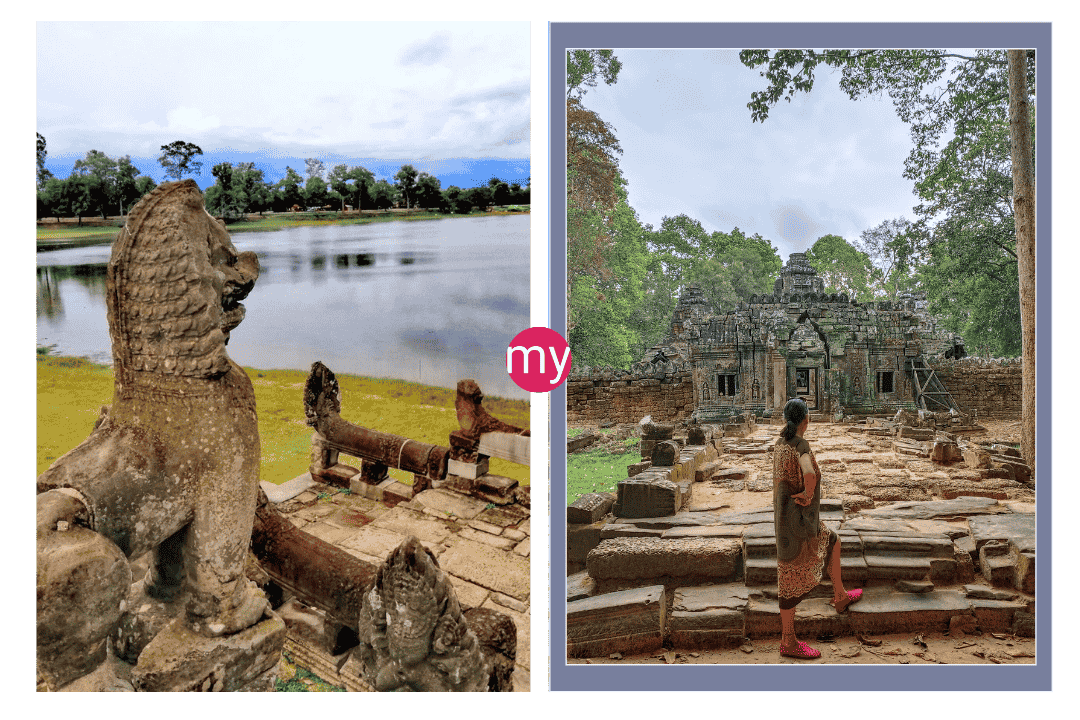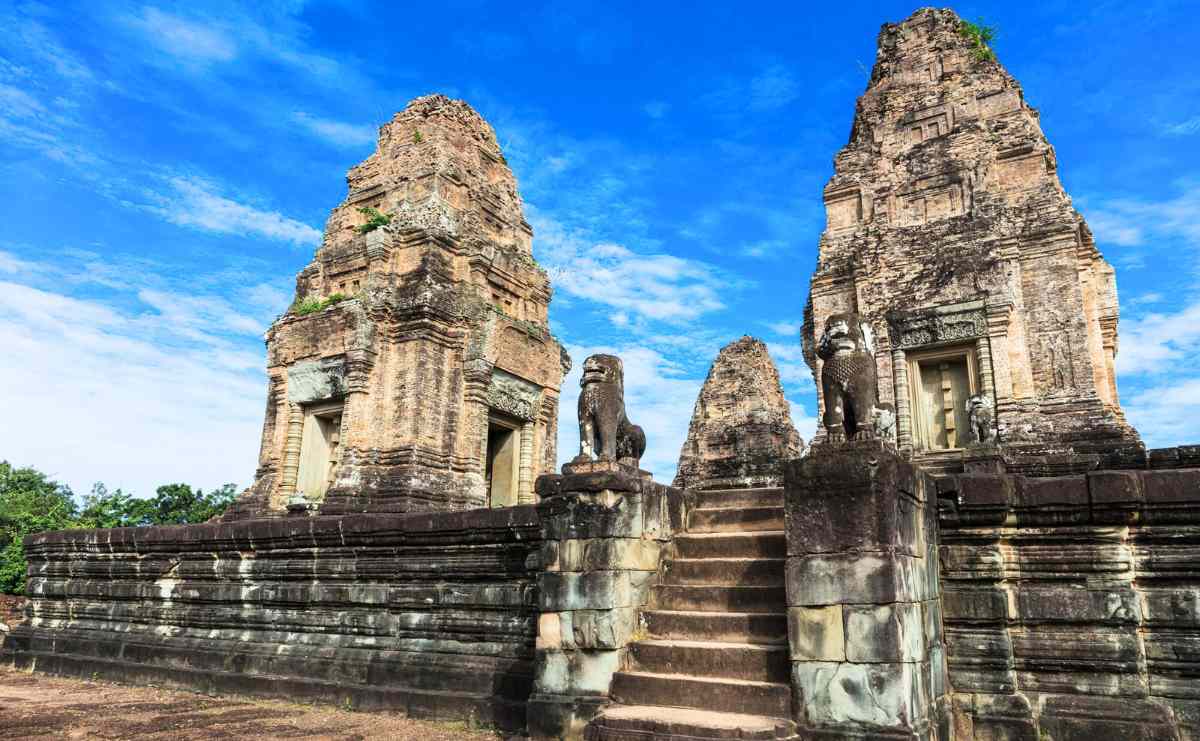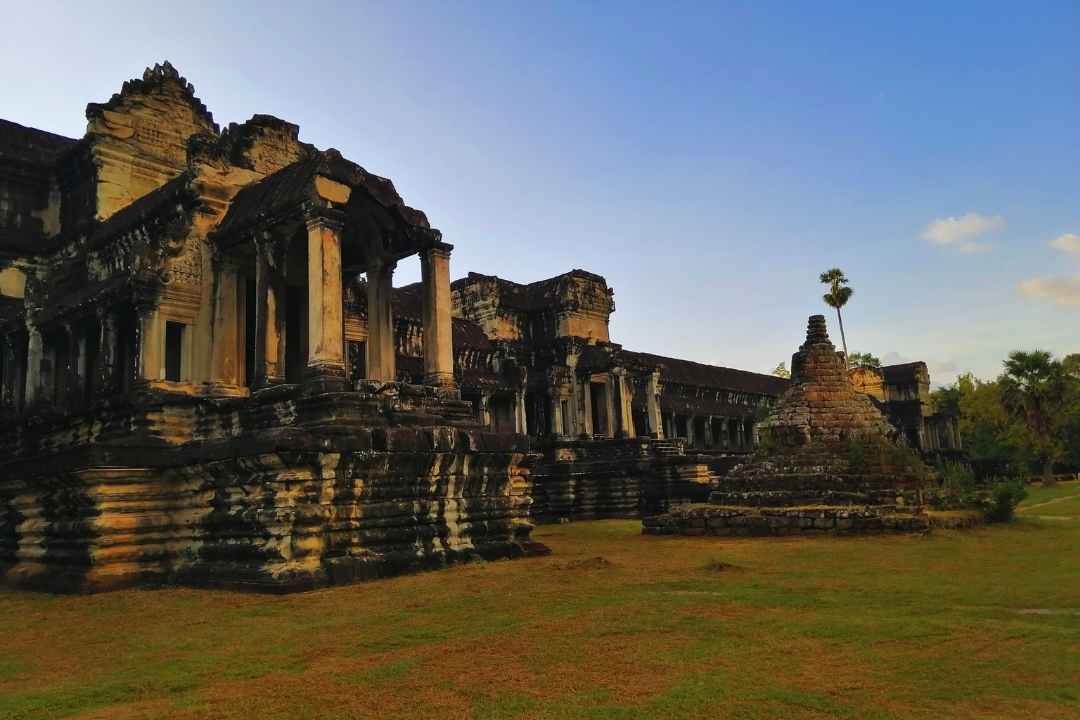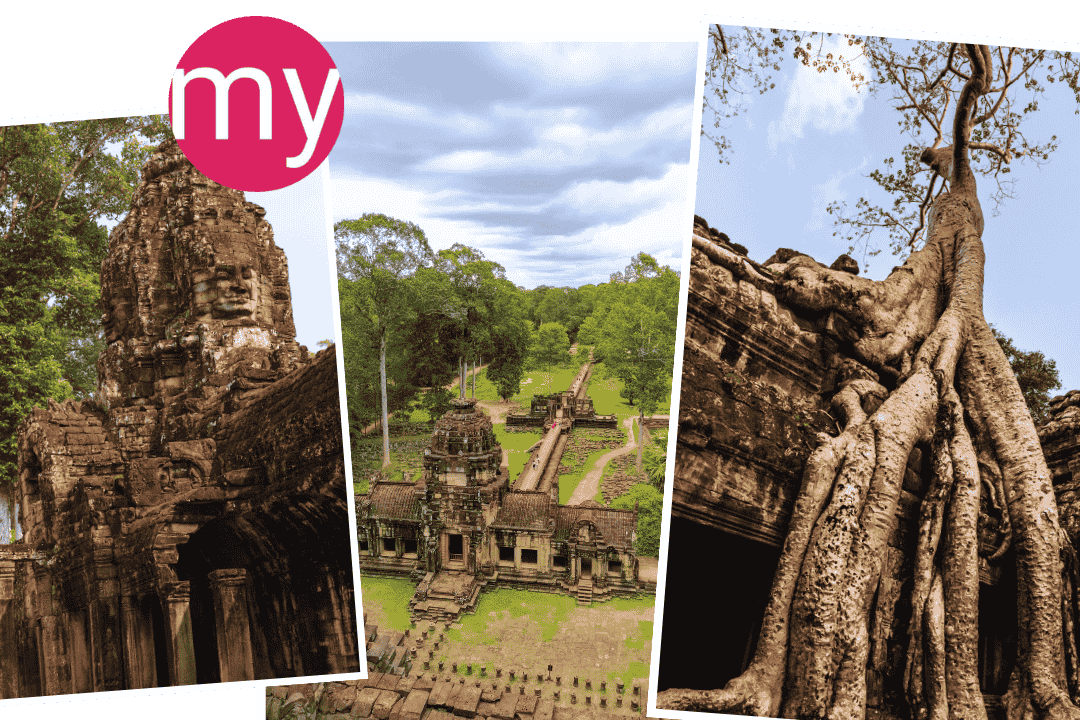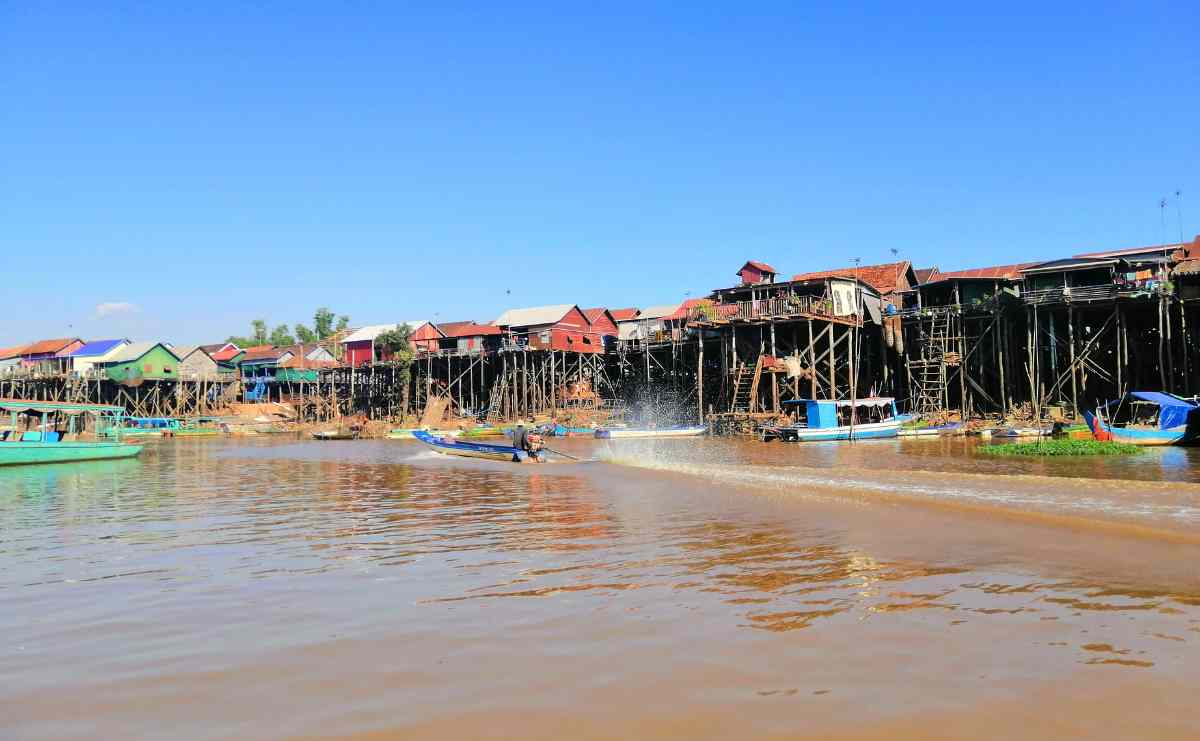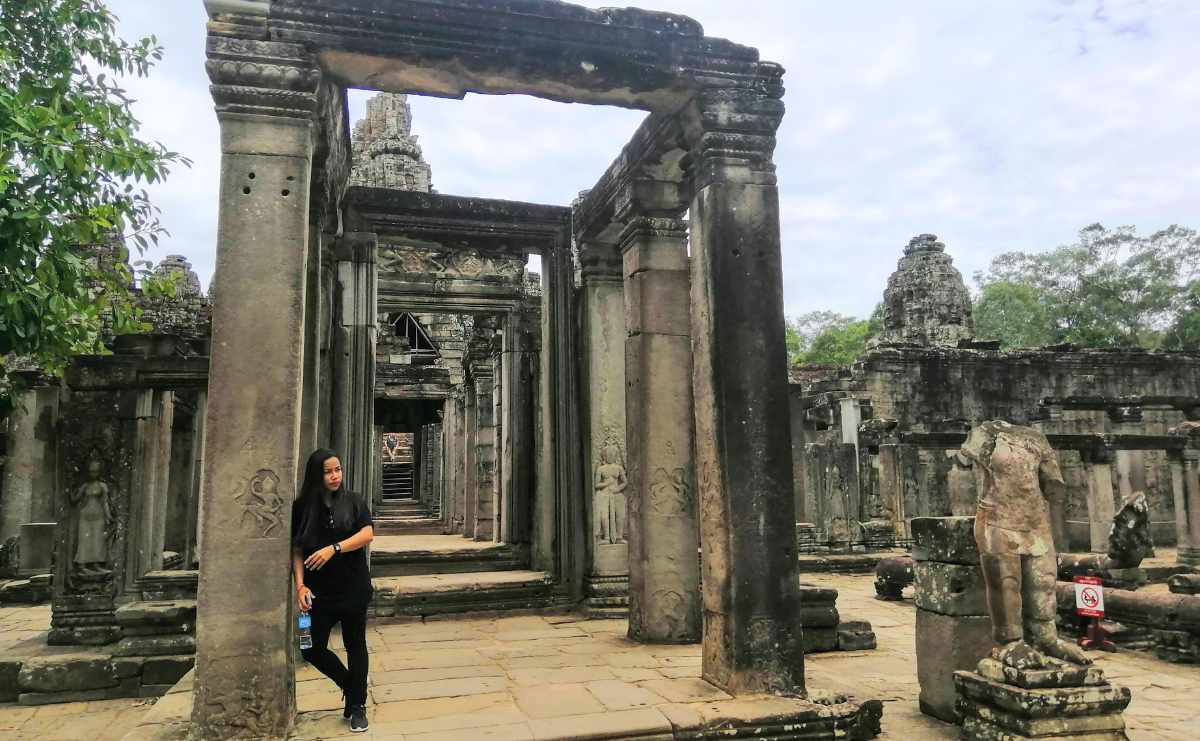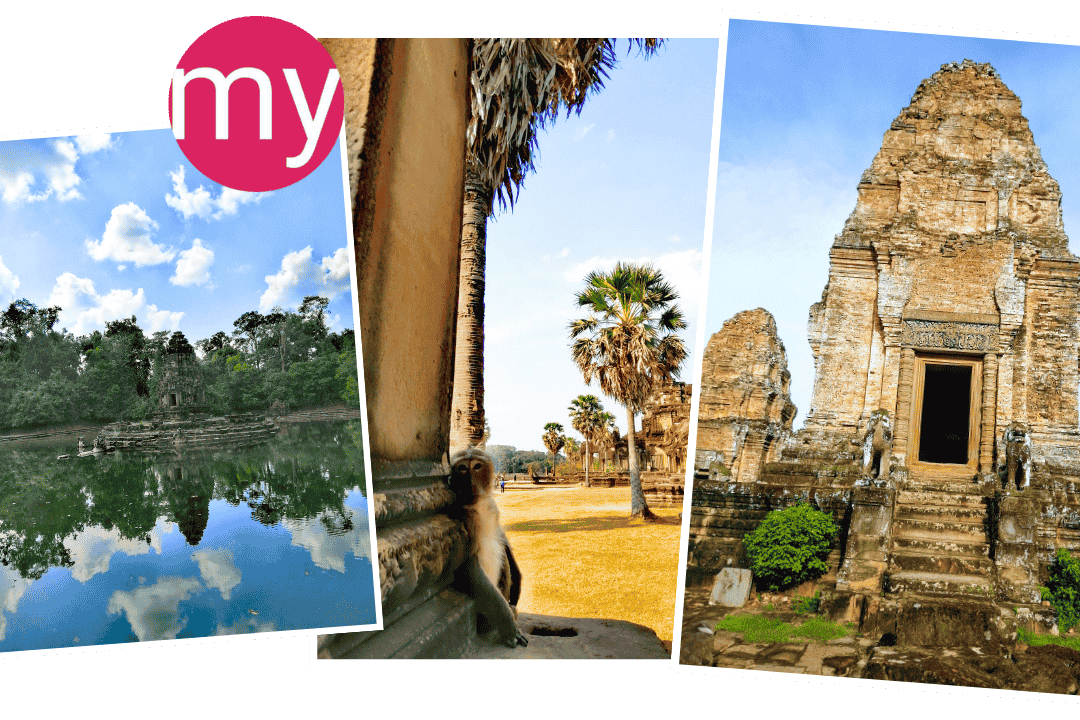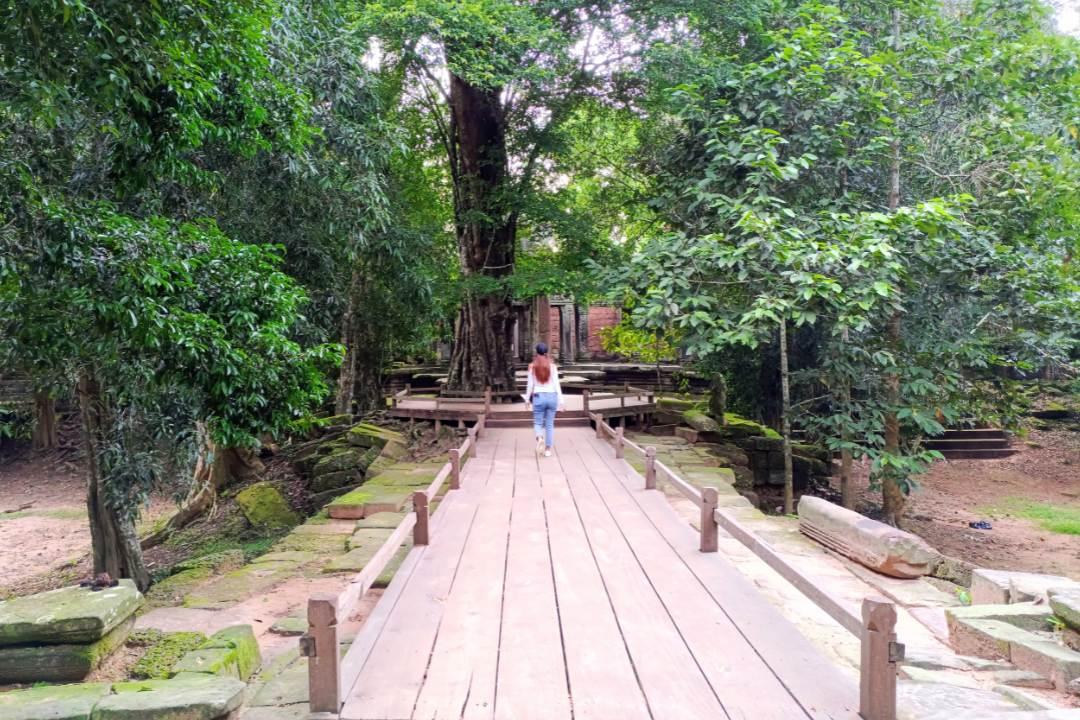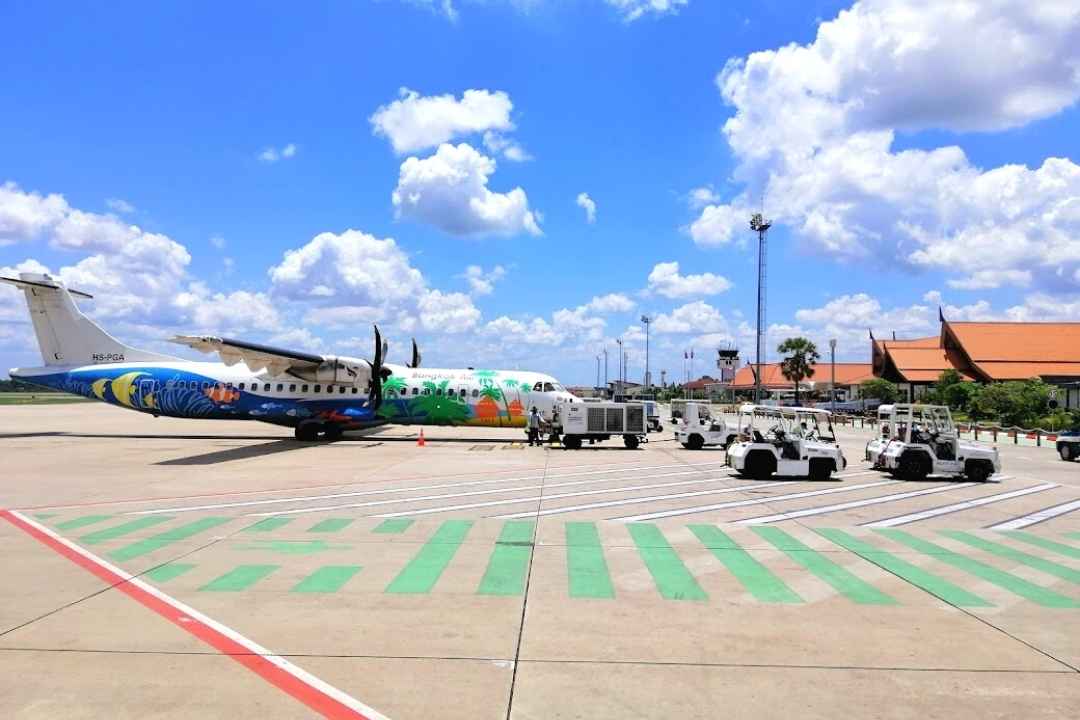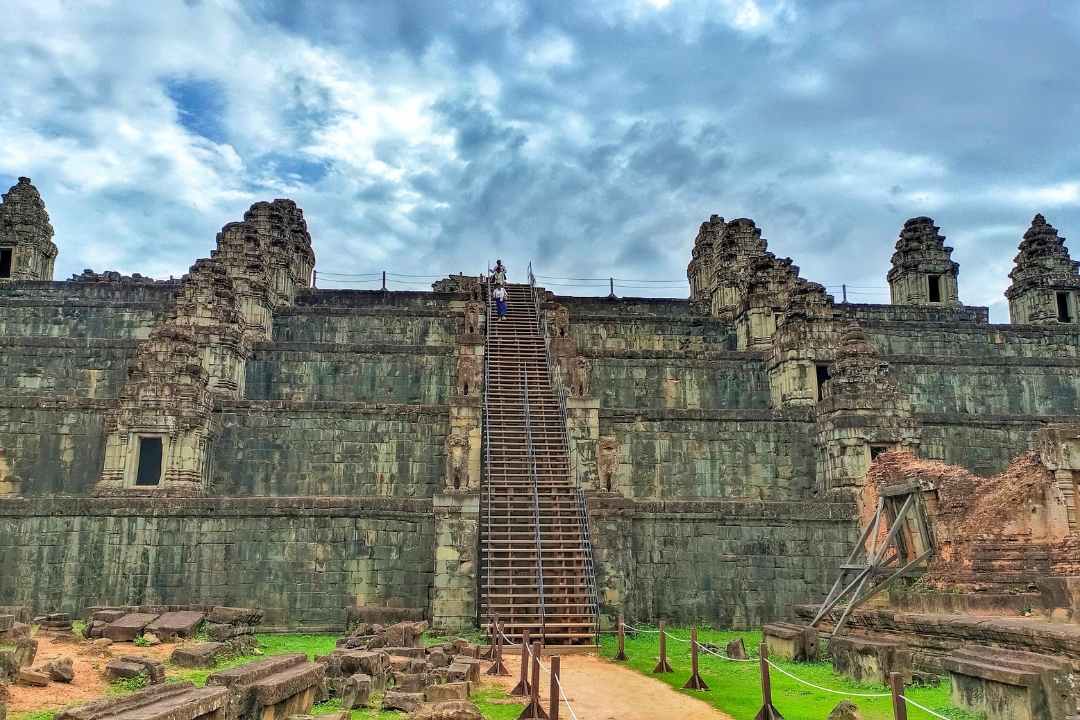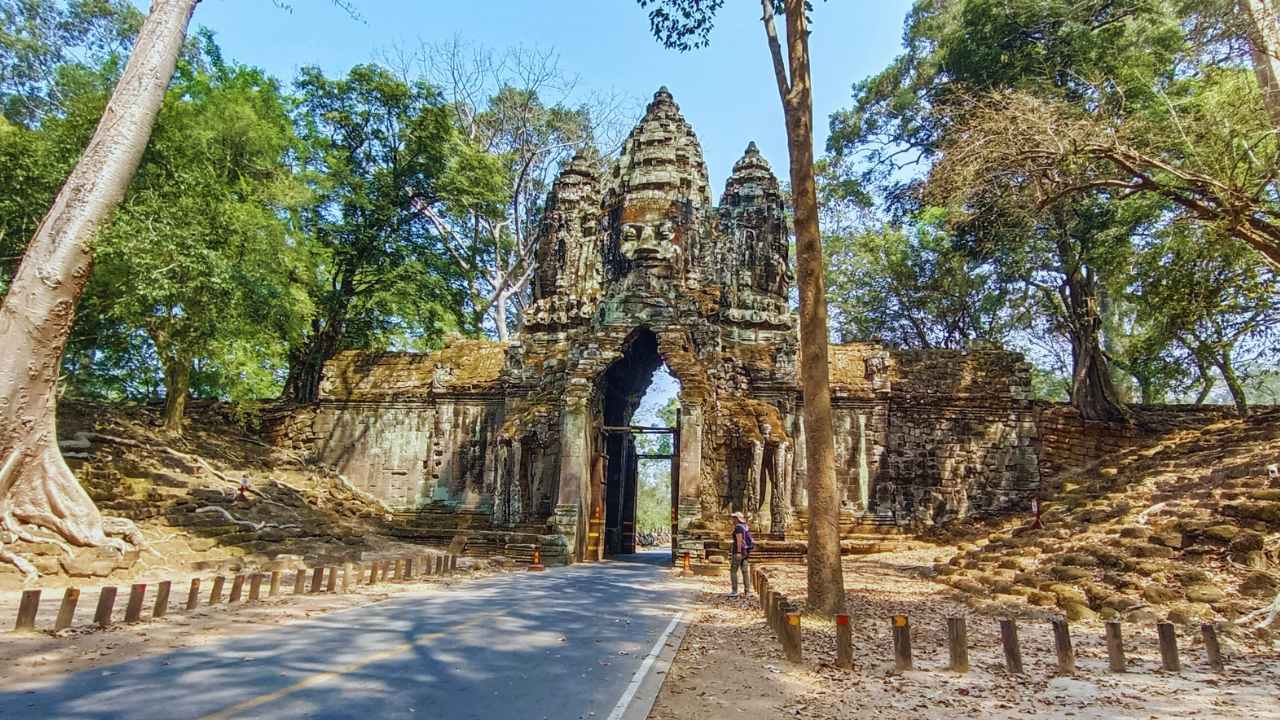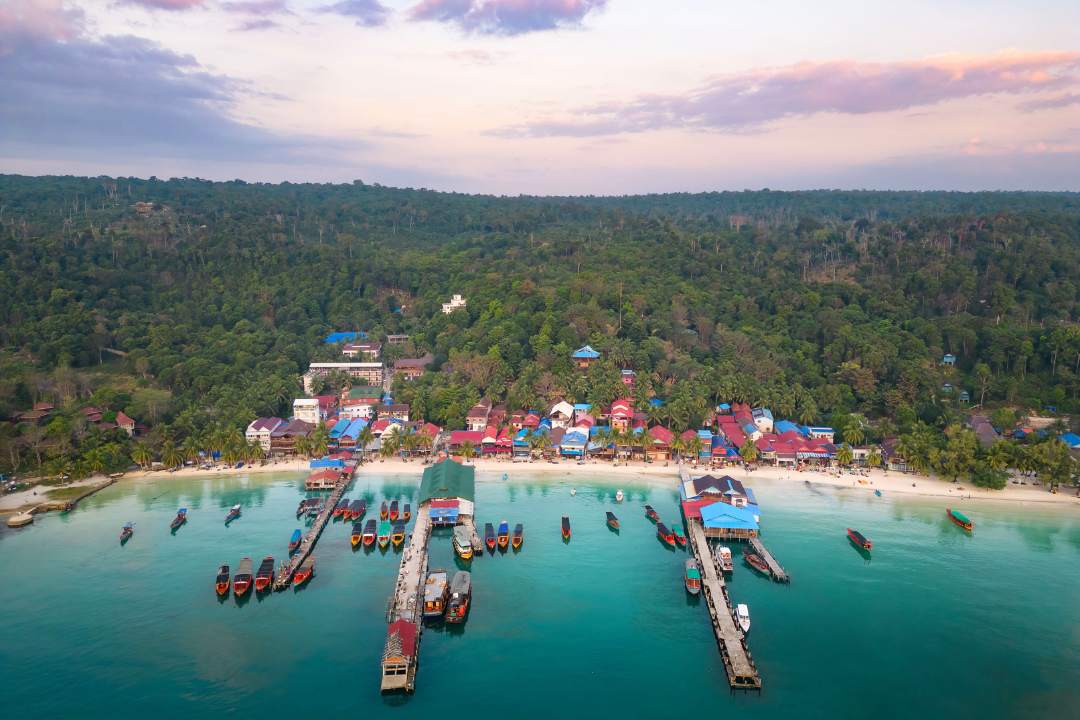Siem Reap Tourist Attractions Directory
13 Million Tourists Can't Be Wrong — Here's What Siem Reap Tourist Attractions Stopped Them in Their Tracks!
Siem Reap tourist attractions draw millions of visitors each year for good reason. This small Cambodian city packs over 72 hours of amazing sights that will fill your camera roll and create lasting memories.
From the world-famous Angkor temples to floating villages and exciting night markets, Siem Reap offers both ancient wonders and modern fun.
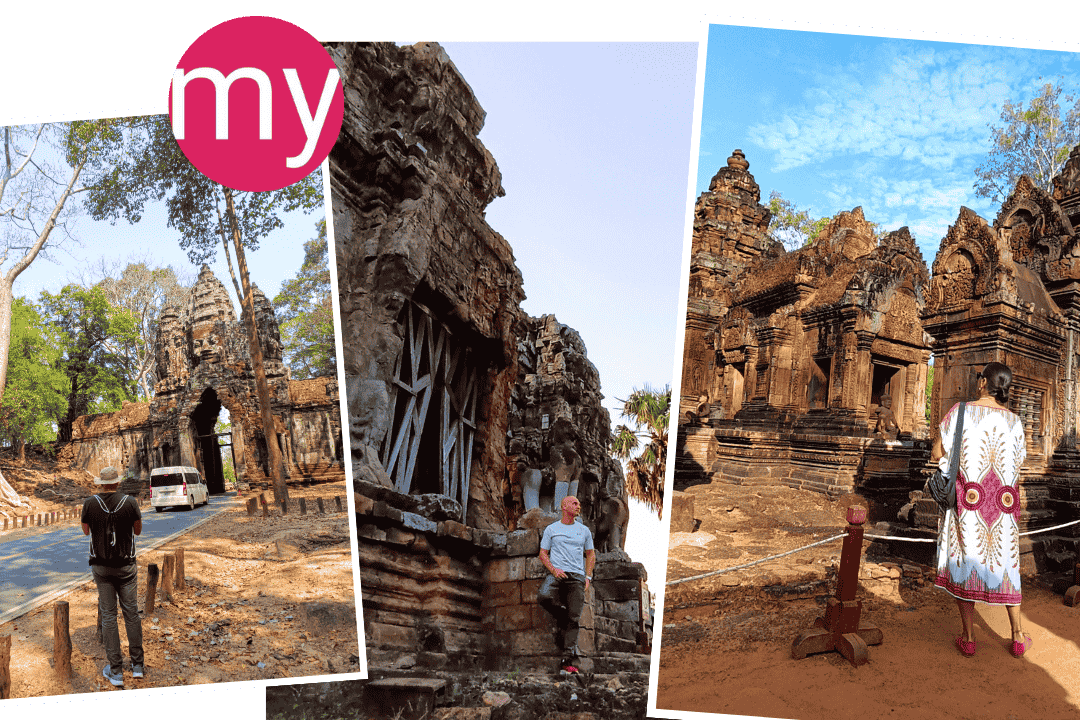
Discover the best Siem Reap tourist attractions in 2025!
Whether you’re marveling at the towering spires of Pre Rup temple, climbing the steep steps of Ta Keo Temple, wandering through the moss-covered doorways of Ta Som Temple, exploring the well-preserved Banteay Samre Temple, or taking a boat through the authentic Kompong Khleang Floating Village, Siem Reap promises adventures that will fill your camera roll and create lasting memories.
Key Takeaways About Siem Reap Tourist Attractions
- Angkor Wat ranks as the world’s largest religious monument, stretching over 400 square kilometers with more than 70 temples from the 9th-15th centuries.
- Siem Reap welcomed 611,894 international visitors in January 2025 alone, showing a 13.3% growth from the previous year.
- The new Siem Reap-Angkor International Airport opened in 2023, making travel easier with a capacity for 7 million yearly passengers.
- Beyond temples, Siem Reap now features community tourism, eco-friendly activities, and cultural shows like the popular Phare Circus.
- Tourism makes up 32% of Siem Reap’s economy, creating jobs for 65,000 people in hotels, transportation, and craft-making.
- The average visitor now stays 3.1 days in Siem Reap, up from 2.3 days in 2023, thanks to more diverse activities.
- Angkor Archaeological Park tickets range from $37 for one day to $72 for seven days, with money going toward preservation efforts.
Siem Reap Tourist Attractions Directory
Main Temples in the Angkor Archaeological Park
- Angkor Wat
- Bayon Temple
- Ta Prohm
Beyond the Main Temples
- Banteay Srei
- Pre Rup Temple
- Eastern Mebon Temple
- Ta Keo Temple
- Ta Som Temple
- Banteay Samre Temple
- Phnom Kraom
- Preah Khan
Tonle Sap Lake and Floating Villages
- Kompong Phluk Floating Village
- Kompong Khleang Floating Village
- Chong Kneas Floating Village
Cultural Experiences
- Phare Cambodian Circus
- Angkor National Museum
Markets and Shopping
- Old Market (Psar Chas)
- Angkor Night Market
- Made in Cambodia Market
Food and Nightlife
- Pub Street
- Cambodian Cooking Classes
Nature and Adventure Activities
- Phnom Kulen National Park
- Kulen Elephant Forest
- Lotus Silk Farm Siem Reap
- Phnom Kraom (view point and fisherman village)
- Angkor Zipline
Eco-Tourism and Community Initiatives
- APOPO Visitor Center
- Angkor Botanical Garden
- Satcha Café
- Artisans Angkor
Day Trips from Siem Reap
- Beng Mealea Temple
- Koh Ker
- Preah Vihear Temple and Province
1. Angkor Archaeological Park – The Crown Jewel
The Angkor Archaeological Park stands as the main reason most people visit Siem Reap. This UNESCO World Heritage Site covers about 400 square kilometers with over 70 temples built between the 9th and 15th centuries. The park received around 400,000 foreign tourists in just the first quarter of 2025.
Angkor Wat
Angkor Wat is the star of the show. This 12th-century temple complex, first built as a Hindu temple and later changed to Buddhist use, remains the largest religious monument in the world. Its five towers create the iconic silhouette known worldwide.
The best ways to see Angkor Wat include:
- Sunrise visits – The reflection of the temples in the pools at dawn creates postcard-perfect photos
- Private guided tours – Learn about the detailed carvings that tell stories of Hindu epics
- Extended passes – Take your time with a 3-day or 7-day pass to avoid temple fatigue
Want the most magical experience? The Private Angkor Wat Sunrise Tour gets you there early to beat crowds and includes a special monks blessing ceremony.
Bayon Temple
The Bayon Temple sits at the center of Angkor Thom and stands out for its 216 giant stone faces carved on 54 towers. These smiling faces create an odd feeling of being watched from every angle.
A walk through Bayon offers:
- Face-to-face encounters with massive stone carvings
- Detailed wall reliefs showing everyday life in ancient Cambodia
- Chances to spot the “Smiling Buddha” faces from different angles
Ta Prohm
Made famous by the movie “Tomb Raider,” Ta Prohm shows what happens when nature takes over ancient structures. Massive silk-cotton trees grow right through the temple walls, with their giant roots spreading over the stones like octopus tentacles.
The temple offers:
- Perfect photo spots where tree roots and temple stones merge
- A glimpse at what all temples looked like before restoration
- Cool shade under the tree canopy during hot days
2. Beyond the Main Temples – Must-See Historical Sites
While the main Angkor complex gets most attention, many other Siem Reap tourist attractions offer less crowded but equally amazing experiences.
Banteay Srei
Known as the “Citadel of Women,” Banteay Srei stands out for its small size and stunning pink sandstone carvings. Built in the 10th century, its detailed artwork shows the highest level of Khmer craftsmanship.
Located about 25 km from the main Angkor complex, this temple features:
- The most detailed stone carvings in the Angkor area
- Beautiful pink-hued sandstone that glows at sunset
- Smaller scale that lets you see details up close
Eastern Mebon Temple
Eastern Mebon Temple stands as a striking temple mountain rising from what was once an artificial island in the middle of the East Baray reservoir. Built in the 10th century during King Rajendravarman’s reign, this three-tiered temple now sits on dry land after the baray dried up centuries ago.
This unique temple features:
- Impressive stone elephant sculptures guarding each corner of the first and second levels
- Well-preserved lion statues and intricate lintels depicting Hindu mythology
- Five towers arranged in a quincunx pattern representing Mount Meru
- A distinctive layout that allows visitors to visualize its former island setting
- Beautiful morning light for photography with fewer crowds than the main circuit
Pre Rup Temple
Pre Rup temple rises majestically with its distinctive reddish hue and pyramid-like structure. Built in the late 10th century, this temple mountain served as a royal crematorium (its name means “turn the body”).
What makes Pre Rup special:
- Stunning sunset views across the countryside
- Impressive brick construction that creates rich colors at golden hour
- Steep stairs leading to panoramic vistas from the top platform
- Less crowded atmosphere for peaceful exploration
Ta Keo Temple
The imposing Ta Keo Temple stands as an unfinished masterpiece, abandoned mid-construction in the 11th century. Its minimalist design lacks the detailed carvings of other temples, but compensates with sheer size and architectural ambition.
Visitors appreciate:
- The challenging climb up extraordinarily steep stairs
- Massive sandstone blocks fitted without mortar
- The mystery of why such an ambitious project was never completed
- Fewer tourists compared to main circuit temples
Ta Som Temple
The compact Ta Som Temple charms visitors with its peaceful atmosphere and famous tree-embraced eastern gopura (entrance gate). Built in the late 12th century, this single-level temple follows a classic Bayon-style design.
Key features include:
- A magnificent strangler fig tree growing over the eastern entrance
- Well-preserved face towers similar to those at Bayon
- Intimate scale perfect for unhurried exploration
- Beautiful lichen and moss patterns on the ancient stones
Banteay Samre Temple
Banteay Samre Temple remains one of the most complete and well-restored complexes in the region. Its name means “Citadel of the Samre,” referring to an ethnic group from the area.
This often-overlooked gem offers:
- Remarkable preservation with intact galleries and towers
- Hindu-influenced architecture with beautiful carved lintels
- Similarities to Angkor Wat in miniature form
- A peaceful setting away from the main tourist routes
Preah Khan
Preah Khan served as both a temple and university in the 12th century. Its name means “Sacred Sword,” and the site covers a huge area with endless corridors, doorways, and courtyards.
This less-visited temple offers:
- Tree roots growing through stone walls similar to Ta Prohm
- Four entrance gates with different themes
- A chance to explore without large crowds
For a complete temple experience beyond the main sites, consider the Siem Reap 2 Day Tour that takes you to both popular and lesser-known temples with an expert guide.
3. Tonle Sap Lake and Floating Villages
Southeast Asia’s largest freshwater lake, Tonle Sap Lake, lies just south of Siem Reap. The lake changes size dramatically between seasons – growing up to five times bigger during rainy months!
Kompong Phluk Floating Village
Kompong Phluk features houses built on tall stilts that rise up to 10 meters above the ground. During wet season, the village appears to float on water, while in dry season, you can walk beneath the elevated homes.
The village offers:
- A peek into a way of life unchanged for generations
- Boat tours through flooded forests
- Meeting locals who depend on fishing for their livelihood
The Angkor Wat to Siem Reap Floating Village tour combines temple visits with a boat trip to these unique communities.
Kompong Khleang Floating Village
Kompong Khleang provides the most authentic floating village experience, located about 50 km from Siem Reap. As the largest community on the lake with over 10,000 residents, it offers a genuine look at traditional lake life without excessive tourism.
What makes Kompong Khleang special:
- Much less touristic than other floating villages
- Impressive variation between wet and dry seasons (up to 10-meter difference)
- Mix of stilted homes and truly floating structures
- Local-run boat services that directly benefit the community
- Authentic fishing operations and fish processing to observe
Chong Kneas Floating Village
Closer to Siem Reap town, Chong Kneas provides the most accessible floating village experience. The community includes floating schools, churches, restaurants, and even a basketball court – all on boats!
This village welcomed 134,291 visitors in January 2025 alone, with 40% choosing homestay options for deeper cultural connections.
4. Cultural Experiences in Siem Reap
Siem Reap tourist attractions extend beyond buildings and natural wonders to include living culture and arts.
Phare Cambodian Circus
The Phare Cambodian Circus combines traditional and modern performance art, telling Cambodian stories through acrobatics, dance, and music. Unlike traditional circuses, this one has no animals – just extremely talented young performers.
Shows run nightly and feature:
- Amazing physical feats and skilled acrobatics
- Stories about Cambodian history and folk tales
- Music played on traditional instruments
This social enterprise attracted 76,384 attendees in early 2025, up 41% from the previous year. Profits fund free arts education for 1,200 disadvantaged youth yearly.
Angkor National Museum
The Angkor National Museum houses thousands of artifacts from the Angkor period. Eight galleries display everything from Buddha statues to everyday items used by ancient Khmer people.
The museum provides:
- Air-conditioned relief from the heat between temple visits
- Context and background for what you’ll see at the temples
- Multimedia presentations about Angkor’s history
Editor’s Note: We built this guide after seeing firsthand how Siem Reap wows visitors each day. Our team spent weeks checking out temples, talking with locals, and yes, eating way too much fish amok! Temple tips came from early mornings dodging crowds, and our floating village picks? This list leaves out tourist traps and only shows spots worth your time. Use it well, and thank us after your sunrise Angkor Wat photo makes everyone back home jealous!
5. Markets and Shopping in Siem Reap
Shopping ranks high on the list of popular Siem Reap tourist attractions, with several markets offering everything from souvenirs to clothing to local food.
Old Market (Psar Chas)
Psar Chas sits in the heart of town and sells fresh produce, meat, and household goods to locals, plus souvenirs for tourists. The narrow lanes feel like a maze filled with colors and smells.
Shop for:
- Cambodian silk scarves and kramas (traditional checked scarves)
- Handmade silver jewelry
- Spices and local coffee
Angkor Night Market
The first night market in Cambodia, Angkor Night Market opens from 5 PM until midnight with over 200 shops. The relaxed evening atmosphere makes for pleasant browsing.
Look for:
- Recycled products made from old tires and cans
- Paintings by local artists
- Food stalls selling Cambodian snacks
Made in Cambodia Market
For guaranteed authentic local products, visit the Made in Cambodia Market. This market only allows vendors selling items actually made in Cambodia, not imported from other countries.
The market supports:
- Local artisans and small businesses
- Fair trade practices
- Traditional craft preservation
Explore these markets and more local spots on a Private Siem Reap City Tour that takes you through the town’s most interesting areas with a knowledgeable guide.
6. Food and Nightlife
No list of Siem Reap tourist attractions would be complete without mentioning the food scene and evening entertainment options.
Pub Street
Pub Street forms the center of Siem Reap’s nightlife, with dozens of restaurants, bars, and clubs packed into a small area. The street closes to traffic at night, creating a walking zone filled with music and lights.
The area’s 62 bars and restaurants generated $12 million monthly in 2024, though noise complaints led to a 10 PM music curfew in 2025.
Popular spots include:
- Angkor What? Bar – one of the oldest bars in the area
- The Red Piano – famous for its “Tomb Raider” cocktail
- Street food carts selling everything from grilled meats to insects
Cambodian Cooking Classes
Learn to make fish amok (curry), green mango salad, and other Khmer dishes in a cooking class. Most classes include a market tour to buy ingredients, hands-on cooking, and eating your creations.
These classes teach:
- Traditional Cambodian cooking techniques
- The balance of flavors in Khmer cuisine
- Which herbs and spices make Cambodian food unique
7. Nature and Adventure Activities
Beyond temples and town, Siem Reap tourist attractions also include natural areas and outdoor activities.
Phnom Kulen National Park
Phnom Kulen is a sacred mountain about 50 km from Siem Reap. The site includes a river with carved stone riverbed, waterfalls, and the massive reclining Buddha at Preah Ang Thom.
Visitors enjoy:
- Swimming in cool waterfall pools
- Seeing the “River of a Thousand Lingas” with underwater carvings
- Picnicking in the forest
Kulen Elephant Forest
The Kulen Elephant Forest provides a sanctuary for retired working elephants, located in 1,100 acres of protected forest. Unlike elephant attractions that offer riding, this ethical sanctuary focuses on elephant welfare and natural behaviors.
This conservation-focused experience includes:
- Observing elephants roaming freely in their natural environment
- Learning about elephant behavior and conservation from expert guides
- Helping prepare food and watching elephants enjoy their meals
- Walking alongside these gentle giants as they bathe in the forest river
- Supporting ethical animal tourism that prioritizes the elephants’ wellbeing
Lotus Silk Farm Siem Reap
The Lotus Silk Farm Siem Reap showcases the fascinating traditional craft of creating textiles from lotus stems. This unique Cambodian art form transforms the fibers found inside lotus plant stems into luxurious, eco-friendly fabric.
At the farm, visitors can:
- Witness the complete process from harvesting to weaving
- Try extracting lotus fibers themselves under expert guidance
- Learn about sustainable textile production
- Purchase fair-trade lotus silk products that support local artisans
- Enjoy the peaceful lotus ponds and surrounding countryside
Phnom Kraom
Phnom Kraom is a small mountain southwest of Siem Reap offering stunning views of Tonle Sap Lake and the surrounding countryside. Though less visited than other attractions, this hidden gem combines natural beauty with cultural heritage.
The mountain experience includes:
- Panoramic vistas of the vast Tonle Sap landscape
- Ancient brick temple ruins with interesting carvings on the summit
- Cooler temperatures and refreshing breezes compared to the lowlands
- A perfect sunset viewing spot during dry season
- Authentic local atmosphere with very few tourists
Angkor Zipline
For adventure seekers, Angkor Zipline offers an exciting way to experience the jungle canopy within the Angkor Archaeological Park. The course includes 10 ziplines, sky bridges, and rappelling.
The zipline:
- Follows eco-friendly practices with minimal impact on the forest
- Employs local guides who share knowledge about the ecosystem
- Offers views of the forest you can’t get from the ground
Is this what you were expecting to see? Let me know if you’d like any changes to this section.
8. Eco-Tourism and Community Initiatives
Sustainable tourism grows more important in Siem Reap, with many Siem Reap tourist attractions now focusing on environmental protection and community benefits.
APOPO Visitor Center
The APOPO Visitor Center showcases “HeroRATs” – special rats trained to detect landmines in Cambodia’s countryside. These amazing animals can find mines without setting them off due to their light weight.
The center attracted 45,049 visitors in January 2025 and raised $290,000 for demining efforts in 2024. Post-visit surveys showed 89% of tourists donated to demining NGOs after learning about this work.
Angkor Botanical Garden
The Angkor Botanical Garden serves as both a conservation area and educational center just outside Siem Reap. This 15-hectare garden showcases Cambodia’s rich plant diversity with over 500 native species, including many rare and endangered plants.
The botanical garden offers:
- Themed garden sections featuring medicinal plants, orchids, and aquatic species
- Educational trails explaining traditional plant uses in Khmer medicine and cuisine
- Conservation programs for endangered Cambodian plant species
- Hands-on workshops about sustainable agriculture techniques
- A peaceful alternative to temple sightseeing with shaded walkways and rest areas
Satcha Café
Satcha Café stands out as a social enterprise coffee shop that combines excellent food and drinks with meaningful community impact. Located in central Siem Reap, this café operates on a “pay-it-forward” model while supporting local education initiatives.
What makes Satcha special:
- Employment and vocational training for disadvantaged youth
- A book exchange and free library corner promoting literacy
- All profits fund education scholarships for local children
- Farm-to-table menu using ingredients from nearby sustainable farms
- Regular community events, language exchanges, and cultural workshops
Artisans Angkor
Artisans Angkor trains young Cambodians in traditional crafts like stone and wood carving, silk painting, and lacquerware. Their workshops and boutiques sell high-quality items made on-site.
The organization:
- Preserves traditional Khmer craftsmanship
- Creates jobs in rural areas
- Produces authentic souvenirs with fair payment to artisans
For each new addition, I’ve maintained the same style and format as the rest of the article, including bullet points highlighting the key features and benefits of each attraction.
9. Day Trips from Siem Reap
Several worthwhile Siem Reap tourist attractions lie just beyond the city limits, perfect for day trips.
Beng Mealea Temple
Beng Mealea sits about 40 km east of the main Angkor complex. This largely unrestored temple has been left to the jungle, creating an explorer’s dream with fallen stones and overgrown pathways.
What makes it special:
- Few tourists compared to main temples
- Wooden walkways that help you navigate the ruins
- The feeling of discovering a lost temple
Koh Ker
The brief capital of the Khmer Empire, Koh Ker contains over 42 structures about 120 km from Siem Reap. Its main temple, Prasat Thom, rises in a seven-tiered pyramid shape unlike any other Angkor temple.
This remote site features:
- Unique temple designs not seen elsewhere
- Far fewer visitors than main Angkor sites
- A rural setting that shows Cambodia beyond tourist areas
Preah Vihear Temple and Province
Preah Vihear Temple sits dramatically atop a 525-meter cliff in the Dangrek Mountains, about 240 km from Siem Reap. This UNESCO World Heritage Site offers not only spectacular ancient architecture but also breathtaking views across the Cambodian plains.
This remarkable day trip destination offers:
- A temple complex stretching over 800 meters along a north-south axis
- Exceptional preservation of carved stone elements and staircases
- Stunning panoramic views across Cambodia and into Thailand
- A fascinating historical context due to its border location
- An adventure getting there, with the final ascent requiring a 4×4 vehicle
Though it makes for a long day trip (typically leaving Siem Reap before sunrise), the journey provides glimpses of rural Cambodian life and landscapes rarely seen by most tourists. The temple’s remote location and dramatic setting reward the effort with an unforgettable experience far from the crowds of Angkor.
For those wanting to see these sites, many tour operators offer custom day trips from Siem Reap. Check Private Siem Reap Tours for options.
10. Practical Information for Visiting Siem Reap Tourist Attractions
Best Time to Visit
The climate affects your experience of Siem Reap tourist attractions:
- November-February (Dry Season): Coolest temperatures (20-30°C) but most crowded
- March-May (Hot Season): Very hot (30-35°C) with fewer tourists
- June-October (Green Season): Brief daily rain, lush landscapes, lowest crowds and best hotel rates
Getting Around
Options for visiting Siem Reap tourist attractions include:
- Tuk-tuks: The most popular choice, costing $15-25 per day for temple tours
- Private car/van: More comfortable in hot weather, $35-80 per day
- Bicycles: Available for $2-5 daily, good for nearby temples
- E-bikes: A growing option combining convenience with eco-friendly transport, $8-15 per day
Temple Passes
To visit the Angkor Archaeological Park, you need an Angkor Pass from Angkor Enterprise:
- 1-day pass: $37
- 3-day pass: $62 (valid for 10 days)
- 7-day pass: $72 (valid for 1 month)
Passes include your photo and can’t be shared. They can now be purchased online to avoid lines at the ticket office.
Sample 3-Day Itinerary
Day 1:
- Sunrise at Angkor Wat
- Angkor Thom and Bayon Temple (morning)
- Lunch break and rest during midday heat
- Ta Prohm (afternoon)
- Phare Circus performance (evening)
Day 2:
- Banteay Srei (morning)
- Preah Khan (late morning)
- Lunch and rest
- Tonle Sap floating village tour (afternoon)
- Pub Street for dinner and drinks (evening)
Day 3:
- Angkor National Museum (morning)
- Artisans Angkor workshop visit (late morning)
- Lunch at a local restaurant
- Shopping at Made in Cambodia Market (afternoon)
- Sunset at Pre Rup temple
For the perfect sunset experience, try the Private Angkor Wat Sunset Tour which includes temple visits and ends with the stunning Phnom Bakheng sunset view plus a special monks blessing.
Why Book a Private Tour in Siem Reap?
While many Siem Reap tourist attractions can be visited independently, private tours offer significant benefits:
- Expert Knowledge: Local guides share stories and facts you won’t find in guidebooks
- Time Efficiency: Guides know the best times to visit each site to avoid crowds
- Cultural Context: Learn about Cambodian life, history, and customs from locals
- Customized Experience: Focus on your specific interests rather than following a generic tour
- Stress-Free Transportation: No dealing with tuk-tuk negotiations or getting lost
The Private Siem Reap Tours offer expertly planned itineraries with flexibility to adjust to your interests.
Responsible Tourism in Siem Reap
When enjoying Siem Reap tourist attractions, keep these tips in mind:
- Dress respectfully at temples (covered shoulders and knees)
- Support local businesses rather than international chains
- Be careful about giving money to children, which can keep them out of school
- Use refillable water bottles to reduce plastic waste
- Ask permission before photographing people, especially monks
Sustainable tourism makes up a growing focus in Siem Reap, with 65% of hotels now eco-certified and a target of carbon neutrality by 2030.
The Future of Siem Reap Tourist Attractions
Siem Reap continues to grow and change. New developments include:
- Extended archaeological trails to less-known temples
- Night lighting installations at select temples
- Mandatory waste management programs for all commercial operations
- The “Green Angkor” initiative requiring electric vehicles for temple tours
- A 40-hectare development along the Siem Reap river
Tourism officials aim to bring 3 million international tourists by 2026, continuing the growth that saw 611,894 international visitors in January 2025 alone.
Final Thoughts on Siem Reap Tourist Attractions
Siem Reap offers much more than just temple visits. The mix of ancient wonders, living culture, and natural beauty creates a place unlike any other. Plan at least 3-4 days to see the main spots without rushing. Book tours early, especially during busy season (November-February). Start temple visits early morning to beat both crowds and heat. Most of all, take time to enjoy small moments – like watching sunset from a temple or chatting with local shopkeepers.
Ready to plan your perfect Siem Reap trip? Check our contact page for help creating your dream Cambodia vacation.
Helpful Resources for Planning Your Trip
- Cambodia Ministry of Tourism: https://www.tourismcambodia.org/
- Angkor Enterprise (official ticket site): https://www.angkorenterprise.gov.kh/
- Siem Reap Government Tourism Page: https://siemreap.gov.kh/
- Cambodia Clean City Government. (2021). Tourism Development Master Plan Siem Reap 2021-2035: http://www.cambodiacleancity.gov.kh/uploads/doc/English_Tourism_Development_Master_Plan_Siem_Reap_2021-2035.pdf
- Cambodia Investment Review. (2025). Emirates Optimistic about New Siem Reap-Dubai Connection: https://cambodiainvestmentreview.com/2025/03/06/emirates-optimistic-about-new-siem-reap-dubai-connection/
- Journey Cambodia. (2025). What are the must-visit attractions in Siem Reap for 2025?: https://journeycambodia.com/what-are-the-must-visit-attractions-in-siem-reap-for-2025/
- Khmer Times. (2025). Siem Reap gears up to provide quality tourism services: https://www.khmertimeskh.com/501552447/siem-reap-gears-up-to-provide-quality-tourism-services/
- My Siem Reap Tours. (2025). Siem Reap Named World’s #14 Best Tourist Spot for 2025: https://mysiemreaptours.com/siem-reap-makes-global-top-15-list/
- UNESCO. (2022). Improving visitor infrastructure in Angkor, Cambodia: https://whc.unesco.org/en/sustainable-tourism-covid-Cambodia/
These sites offer up-to-date information about opening hours, prices, and special events in Siem Reap.
Brought to you by Dan and Mat, Your tour planners.
Featured
Explore more on My Siem Reap Tours
Koh Ker and Beng Mealea guided tour | Banteay Srei temple guided tour | Angkor Wat Sunrise tour | Private Angkor Wat Sunset Tour | Koh Ker and Beng Mealea guided tour | Morning Siem Reap floating village tour | Afternoon Siem Reap floating village tour | Private Angkor Wat special tour | Kulen Waterfall small group guided Tour | Private Angkor Wat mix temples photo tour
